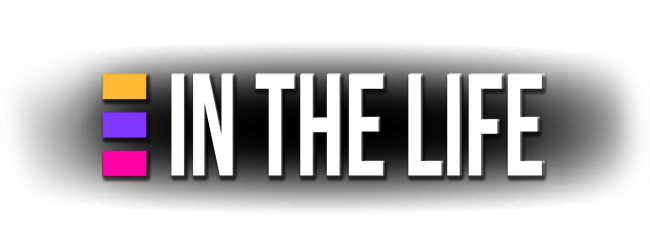You are here
The Time of Our Lives: In the Life – America’s LGBTQ News Magazine
About the Author
Stephen Tropiano has been director of the Ithaca College Los Angeles Program since its inception in 1994. He graduated from Ithaca College in 1984 with degrees in television and radio and cinema and photography. He earned his M.A. in cinema studies from New York University and completed his Ph.D. in critical studies at the USC School of Cinema and Television. In addition to overseeing the program, he teaches undergraduate courses in television and film history, theory and criticism.
He is the author of TV Towns, which profiles fictional towns on classical and contemporary television shows, The Prime Time Closet: A History of Gays and Lesbians on TV, Queer Facts, and Rebels & Chicks: A History of Hollywood Teen Movies. His most recent work, Obscene, Indecent, Immoral and Offensive: 100+ Years of Censored, Banned, and Controversial Films, was published in 2010.
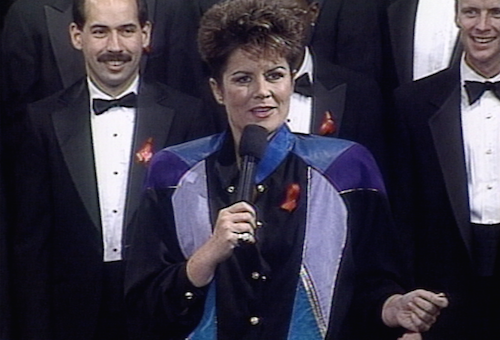
“Now I know a lot of you are thinking, ‘gosh, not another show about gays and lesbians on television.’”
— Kate Clinton, host, In the Life pilot (June, 1992)
When comedian Kate Clinton delivered this one-liner in the opening monologue of the pilot episode of the new PBS series, In the Life, there’s no question the studio audience, along with the gay and lesbian viewers tuning in at home, “got the joke.” Up until that point there had been relatively few gay men, lesbians and bisexuals regularly on television. Of those that were, most were relegated to supporting or recurring characters on “gay-friendly” shows like thirtysomething (1987-1991), L.A. Law (1986-1994), Heartbeat (1988-1989) and Roseanne (1988-1997).
By 1992, there had yet to be a comedy, drama or non-fiction series on commercial network, broadcast cable or pay cable television focusing exclusively on the lives of gay men and lesbians—and it seemed highly unlikely there would be one in the immediate future. The landmark coming out of Ellen DeGeneres (and her sitcom alter ego, Ellen Morgan) was five years away; NBC didn’t add Will & Grace (and Jack & Karen) to their prime time line-up until 1998; and we would have to wait until the turn of the century for Showtime’s Queer as Folk (2000-2005) and The L Word (2004-2009), and the debut of a national cable channel of our very own (Logo TV, which was launched on June 30, 2005).
That’s why the premiere of In the Life, the first and longest-running national gay and lesbian series on American television, was an important milestone.[1] For two decades (1992-2012), In the Life served as a primary news and information source for current social, political and legal issues facing the lesbian, gay, bisexual, transgender and queer or questioning (LGBTQ) community that received little to no attention by the mainstream media. The show openly celebrated LGBTQ culture and profiled political and religious leaders, activists, advocates, artists, writers, performers, athletes and non-profit organizations that were making a difference in the lives of LGBTQ people. In the Life’s cameras also captured LGBTQ history-in-the-making with coverage of such landmark events as the 1993 March on Washington for Lesbian, Gay and Bi Equal Rights and Liberation; the 25th Anniversary of the 1969 Stonewall Riots, which marked the birth of the modern U.S. gay rights movement; the 2000 Millennium March on Washington; and the quadrennial Gay Games. Over the course of 20 seasons, the show’s team of producers, writers and on-camera talent provided ongoing coverage of the AIDS epidemic, the daily challenges facing America’s at-risk LGBTQ youth, and our legal and ideological battles on the national and state levels for equal rights and protection under the law in such areas as housing, employment, military service, immigration, adoption and same-sex marriage.
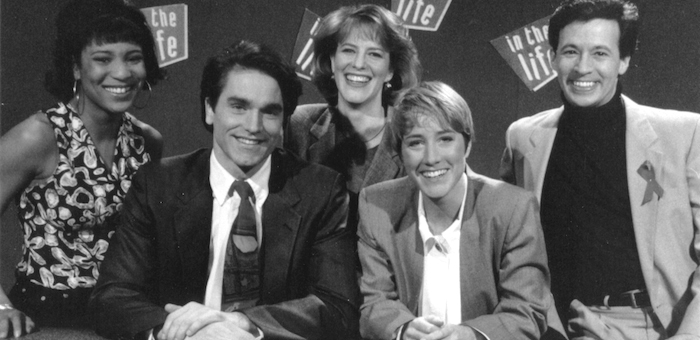 In the Life hosts and correspondents. Image courtesy of UCLA Library Special Collections.
In the Life hosts and correspondents. Image courtesy of UCLA Library Special Collections.
Along the way, In the Life also challenged the stereotypes and negative images of “homosexuals” that have dominated television since it first introduced the taboo subject of homosexuality into our living rooms in the mid-1950s.[2] Although attitudes evolved and LGBTQ rights advanced over time, television programming continued to reinforce heteronormativity by marginalizing non-heterosexual and transgender people. In the Life not only moved LGBTQ people out of the margins and into the spotlight, it gave them a voice. For the first time, we were in front of and behind the camera openly constructing our own images and defining for ourselves who we are as a community, while celebrating our commonalities and our differences. In the process, In the Life succeeded in countering the mainstream media’s dominant, narrow construction of gay men and lesbians as white, affluent urbanites with a more inclusive and diverse portrait of LGBTQ America. We were introduced to LGBTQ people living in cities, towns and rural communities across America, and learned about the political struggles of our LGBTQ brothers and sisters living around the globe.
In the Life: Episode 602
On paper PBS seemed like the ideal outlet for In the Life. A series focusing on the lives of the LGBTQ community was in tandem with the mission of public broadcasting, which, as recommended by the 1967 Carnegie Commission on Educational Television, should “help us see American whole, in all its diversity” and “provide a voice for groups in the community that may otherwise be unheard” (92). But before the pilot episode aired, In the Life was caught in the middle of the culture war waged by the political right over the funding of public broadcasting and its “left wing agenda.” On June 12, 1992, U.S. Senate minority leader Bob Dole (R-Kansas) stood on the Senate floor and denounced the recent vote that increased the budget of the Corporation for Public Broadcasting by 50% (to $1.1 billion) for the next two years in order to “maintain ‘quality programming,’ the kind of quality you can’t find anywhere else.” Dole proceeded to fill his fellow Senators in on the kind of shows PBS would be financing with taxpayers’ money:
“It is to help fund shows, new shows such as In the Life, a 1-hour ‘variety show’ for gays and lesbians. According to USA Today, it is like an Ed Sullivan Show for gays. And it is coming to your living rooms on June 22. It is reportedly scheduled for regular programming, too, up to 12 shows per month beginning in the fall ... Mr. President, is this the kind of programming taxpayers and public TV contributors have in mind? I do not think so ... It seems the broadcasting apologists are hiding behind ‘Big Bird, Mister Rogers, and Masterpiece Theatre,’ laying down their quality smokescreen while they shovel out funding for gay and lesbian variety shows, all those doom and gloom reports about what is wrong with America, and all the other liberal cheerleading we see on public television.” — Bob Dole
Apparently Senator Dole hadn’t done his homework. He stated that 12 shows would be produced each month, when it was actually 12 per year. More importantly, he implied In the Life was being funded by taxpayers’ dollars when in fact the show received no federal funding from PBS or the Corporation for Public Broadcasting (Summers 181). Produced on a shoestring budget by In the Life Media Inc., a non-profit organization, the show was supported by contributions from viewers (who received a copy of In the Life magazine) and several private foundations. Fortunately, Congressman Ted Weiss (NY-D) set the record a few days later and corrected Dole’s mistakes, but not before chastising Dole for his McCarthy-like rhetoric, and for treating gay men and lesbians as “America’s new Communists” while accusing PBS of bringing “subversive [read: gay and lesbian] programming ‘into your living room.’” “Public television was created to address the lives of all Americans,” Weiss concluded, “…[T]hat is the goal of In the Life. It is an enlightened goal that speaks to the many historic struggles to open our culture to all who reside here. It is a goal we should embrace.”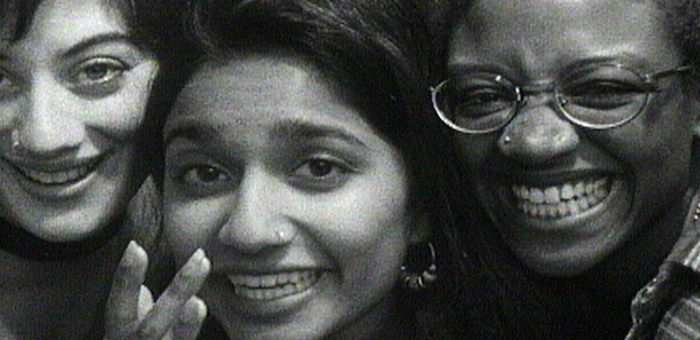
In the Life: Episode 605
Ironically, the show’s creator, documentary filmmaker John Scagliotti, was critical of PBS’ lack of support, which he attributed to their fear of a right-wing backlash (Benz). In the Life was initially presented by WNYC-TV, a New York public television station which signed off in 1996, and later by New York City’s primary public television station, Channel 13/WNET. The series was offered free to PBS stations around the country, but PBS didn’t distribute the program, so stations were under no obligation to run it. In a retrospective of the show that kicked off season 14 (episode #1501), Scagliotti, former host Kathleen Linton and former executive producer Charles Ignacio recalled how they initially had to call the station managers of each PBS station to convince them to air it. The managers expressed their concern that viewers might find their show’s content offensive, or they just flat out said, “We don’t have any gay people here.” Consequently, In the Life initially aired on only six PBS stations until the producers’ perseverance paid off and the number rose to 60 stations (out of 335 PBS stations) in 1993 (Benz), and then 120 stations in 30 states in 1999 (Maynard 105). By 2005, In the Life aired on more than 125 stations in 30 states, which included the 20 major television markets (Summers 181).
The only accurate statement made by Bob Dole was the reference to The Ed Sullivan Show, which was taken from a quote by Scagliotti in USA Today where he described the show’s pilot as a “sort of gay version of Ed Sullivan with a little bit of Oprah thrown in” (Johnson 3D). In fact, In the Life did start as an entertainment show consisting mostly of musical, dance, and stand-up and sketch comedy performances with an occasional moderated in-studio discussion. The show was also very New York-centric with an emphasis on current indie gay and lesbian-themed films and filmmakers as well as New York theater. When In the Life switched over to a news magazine format within its first two years, each half-hour episode consisted of six or seven stories per episode that might cover an array of topics or be loosely tied together by a single theme, such as literacy, youth, family and civil rights. All through these variances, In the Life continued to consistently highlight LGBTQ film culture, particularly documentaries and narrative feature films that focused on a specific social or political issue.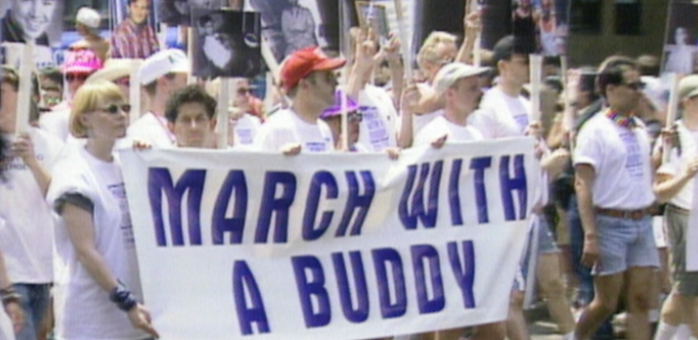
In the Life: Episode 309
One of the show’s most important and lasting contributions was its ongoing coverage of the HIV/AIDS, particularly when the media no longer considered the disease “front-page news.” In December 1996, an episode entitled “The State of AIDS” featured segments on protease inhibitors, and profiles of AIDS activist Michelle Lopez and composer John Corigliano, whose “Symphony #1” was inspired by the AIDS crisis. Four years later, in recognition of World AIDS Day, “AIDS is Still a Big Deal” (Episode #1803) featured stories on high-risk behavior among HIV+ young gay men, discrimination in the workplace, and an on-camera discussion on the current state of the pandemic featuring Dr. Mathilde Krim, founding chairman of the American Foundation for AIDS Research (amFAR). In 2010, “The Cost of Stigma” (Episode #2003) offered an in-depth look at how fear and misinformation are at the root of the criminalization of HIV transmission. These and the many other AIDS-related episodes and segments that aired throughout the show’s 20-year run served as a painful, yet much needed reminder that the AIDS crisis was far from over.
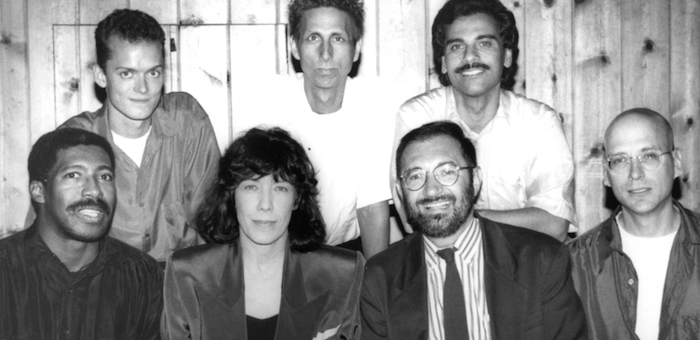
Lily Tomlin (front, second from left) and series producer John Scagliotti (front, third from left), with The Flirtations.
In the Life also served as an advocate for a group that historically has had little to no voice—LGBTQ youth. In an era when young people are coming out as early as middle school, In the Life raised the public’s awareness of their daily struggles with homelessness, AIDS, bullying and suicide as well as addressing the discrimination they face within the American justice system and the negative impact of restrictive, homophobic laws pertaining to foster care and adoption.
When In the Life was in production, the talented people behind the sceneswere most likely not fully cognizant that the invaluable contribution they were making to the LGBTQ community and its legacy would continue after the show’s finale episode aired in December of 2012. But the two decades of our history that they so expertly captured on video has now been preserved for future generations to watch, learn and fully understand the battles were fought and just how far we’ve come, and come out into the world.
Notes
[2] Locally produced public affairs shows like Confidential File and The Open Mind featured a round table of experts--psychiatrists, pediatricians, lawyers and clergyman--who reinforced negative social myths about homosexuals as they shared their respective theories and opinions on such issues as the origins of homosexuality (inborn or environmental?), its prevention (through proper parenting), and the danger gay men posed to children and society as a whole. One of the only known existing examples is an episode of The Open Mind entitled “Homosexuality: A Psychological Approach,” which aired on September 29, 1956 on WRCA-TV. In this second of a three-part installment on the subject, host Richard D. Heffner welcomed guests Philip Polatin from the New York Psychiatric Institute, and Dr. Harry Bakwin, President of the American Academy of Pediatrics. The episode can be viewed on Channel 13 (New York’s PBS affiliate) at http://www.thirteen.org/openmind/aging/homosexuality-a-psychological-app... and viewed and downloaded at the Internet Archives (https://archive.org/details/openmind_ep61). See Tropiano 2-7.
References
Benz, Dorothee. “In the Life: PBS Keeps Its Distance from Gay Programming.” FAIR. Fairness & Accuracy in Reporting, Inc., 1 June 1993. Web. 9 June 2014.
Carnegie Commission on the Future of Public Broadcasting. A Public Trust: The Report of the Carnegie Commission on the Future of Public Broadcasting. New York: Bantam Books, 1979. Print.
Dole, Sen. Robert. “Public TV’s Gay and Lesbian Variety Show: More Quality Programming?” Cong. Rec. Lib. of Cong., 12 June 1992. Web. 13 June 2014.
Johnson, Peter. “PBS gets ‘In the Life’ of gay and lesbian issues.” USA Today 11 June 1993: 03D. Print.
Maynard, Kevin. “In the Life, Across the County.” The Advocate 17 August 1991: 105. Print.
Summers, Claude J. “In the Life.” The Queer Encyclopedia of Film & Television. Ed. Claude J. Summers. Berkeley: Cleis Press, 2005. Print.
Tropiano, Stephen. The Prime Time Closet: A History of Gays and Lesbians on TV. New York: Applause Books, 2002. Print.
Weiss, Rep. Ted. “In Defense of Public Television and ‘In the Life.’” Cong. Rec. Lib. of Cong., 17 June 1992. Web. 13 June 2014.
West, Melanie Grayce. “Celebrating 20 Years of ‘In the Life.’” The Wall Street Journal. Dow Jones & Company, 23 March 2012. Web. 9 June 2014.
To report problems, broken links, or comment on the website, please contact support
Copyright © 2025 UCLA Film & Television Archive. All Rights Reserved






 Mobile Navigation
Mobile Navigation
